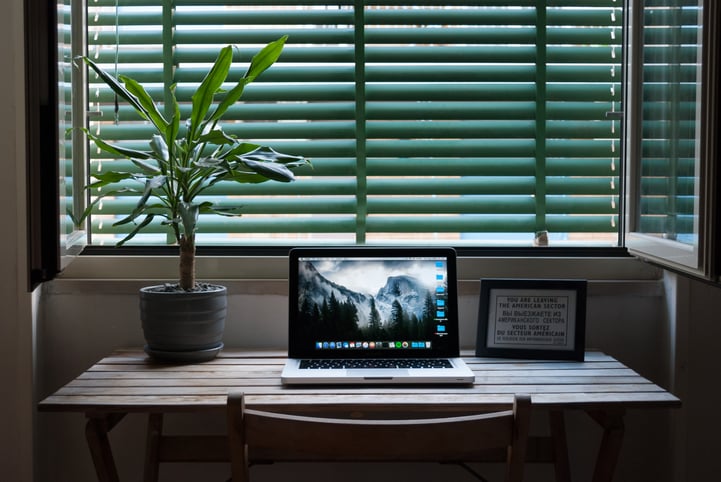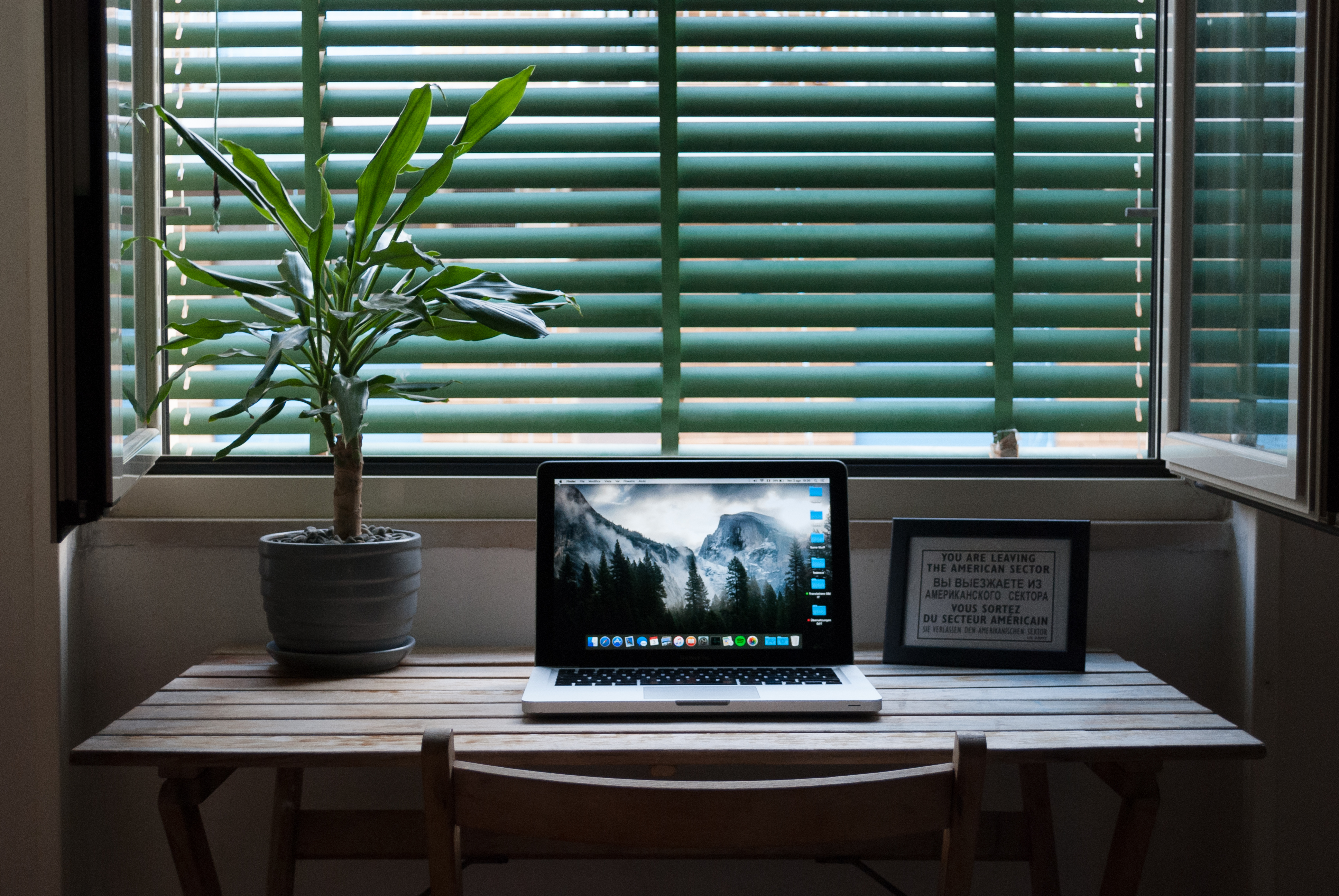
We know what you're about to say. We've only just celebrated Christmas, seen in the New Year and finished finding interesting ways in which to extend the culinary lifecycle of cold turkey. It's still Baltic outside, temperature-wise and any signs of spring bulbs remain a few of months distant. Nevertheless, the effects of summer on indoor air quality can't be dismissed. Plus, like fashion, the air hygiene sector likes to work at least one season ahead to afford us all a timely insight into just what everyone will be doing to avoid feeling under the weather, come those long days of summer and beyond.
While it's all about cold, cold and dry air right now, it would be foolish to lose sight of how warm, humid and dry air can impact on our quality of life, when Mother Nature cranks up the heat dial in a few months from now. Which explains the presence of our latest blog entry. Plus a heads up on the enemy of the indoor air quality state - namely mould.
High humidity levels can trigger the growth of mould, which in turn can wreak havoc on our health and well-being in an indoor environment, come rain or shine. Or snow, for that matter, as mould can easily form in colder climes when we fill our living spaces with superficial heat sources to stave off frost.
But back to the business of summer, and mould requires either/both moisture or water to sustain its growth spurts. As luck would have it, humans provide mould with the former in great spades during the summer months, courtesy of our air-conditioning units. These assemblages create a huge volume of moisture when they're typically up and running between June and September, which subsequently feeds the presence of mould within our four walls. Domestically, or is more often the case, during our office life and times.
So Why Should The Presence of Mould Impacting on Indoor Air Quality in the Summer Bother Us?
It should bother anyone who works in an office, or indeed, employs people to work in offices, for the simple reason it could affect their health. So much so, that employees might then be forced to take time off sick. Which of course would then have a knock-on effect with productivity levels, not to mention general staff morale as a by-product of a problem which can be eliminated. Yes, we're talking about Sick Building Syndrome.
And yes, it's very much a 'thing'.
With classic symptoms ranging from headaches and respiratory issues, to coughing and/or fevers even, SBS is not something we should take lying down. Or we'll find ourselves having to get horizontal to help us recover from illnesses caused by the unwitting inhalation of nefarious contaminants.
One of the problems is that poor indoor air quality is, similar to electricity, not easy to point out. As it's not a tactile or visible commodity in that sense. Indeed, indoor air quality per se is not an easy concept to define; nor physically pinpoint. But that's not to say it doesn't exist. Rather it is something that we can all work to reducing and ultimately, eliminating.
Moreover, there we all were thinking that the indoor air that we breathe is so much safer than the toxins we're exposed to every time we stick our heads outside the door. In addition, to reinforce the flaws in that urban legend, recent research on that very topic noted that it’s not unheard of for indoor environments to sometimes play host to levels of pollutants markedly higher than those monitored outdoors.
What Can We Do To Determine That Our Indoor Air Quality During Summer Months Isn't Compromising Our Health, Then?
Thankfully there are an array of measures we can easily adopt around the workplace to ensure that our health doesn't suffer too much. And that the HR department isn't scrutinising our absentee stats too closely. All of which need to be implemented from the top down, anyway. So that both employers and employees are singing from the same hymn sheet, as they say. These include:
• Clean Your Vents - Arguably the most important line of defence in staving off the onset of mould and any other unseen practitioners of poor indoor air quality. Look at it like this. Over a period of time (and if not regularly cleaned) air vents will build up a film of dirt. If this structure becomes dirty, then it stands to reason that the (supposedly fresh) air flowing through them will naturally get dirty too
• Keep Vents Open - At all times too, might we add. Open and unobstructed by the presence of any office furniture, boxes or other random items which could hamper the journey of all that clean air within an office space
• Let the Wind Blow - OK. First things first. This call to arms might sound a little counter-intuitive. After all, doesn't preserving the quality of indoor air have a lot to do with keeping the outside pollutants at arm's length? Well, yes and no. The latter being relevant in terms of every enclosed space needing a blast of fresh air from time to time, as a the re-circulation of stale air isn't going to help the health cause. Here's a top tip to consider though. Fling open those windows on windy days, as statistically air quality tends to be better on windy days. A theory arrived at due to pollutants sitting in the air being stirred up and dispersed when the wind blows up a head of speed
• But Keep Humidity Out - On balmy summer days, baton down the hatches Wizard of Oz-style, as damp air from outside can systematically raise a building's humidity levels if it circulates through air vents. Thus encouraging those abovementioned indoor air quality bad boys; mould and mildew.
• Give The Air-Conditioning Unit Some TLC - Naturally, if your sealing the property on a hot day to keep the humidity at bay, you'll need to act quickly to counter the stifling heat then building from within. Which means your attentions immediately turn to the A/C system. Which is why you must tune up said assemblage so as to improve the air quality which it's responsible for then manifesting. Professional air hygiene experts will service your unit to ensure that it's running smoothly and efficiently heading into the summer season, including conducting routine checks. These extend to cleaning the condenser coil and inner compartment of the system, and safely removing dust, allergens and other air pollutants. They’ll also dust the fans and change the filters, ensuring air moves through your vents effectively and your filters catch pollutants
• Consider UV Lighting - Unfortunately due to the very nature of the beast, A/C units have a recurrent habit of ensuring that the ductwork stays cool and collects moisture almost constantly. But fear not, as the answer comes in the admittedly unlikely shape and form of lighting. UV lighting, to be precise. Install UV lighting to the interior ductwork and it's possible to eradicate the mould and bacteria which reside in these cool, dark recesses
• Dehumidifiers Work Wonders - Many allergens thrive during humid periods in the annual weather cycle, whilst dust mites themselves notoriously trigger allergies and asthma. Investing in a humidifier can help control the dust mite count and also deter allergens such as mould from gaining a foothold in an indoor area
• Groom Pets Regularly - Whether you are working from home or have an office dog, this can apply in a lot more situations than perhaps 12 months ago. It's a well known fact that our pets shed more fur in the summer months to keep their bodies cool as well as prepare for their winter coats. Such excess materials can easily clog up an air filter and impact negatively on indoor air quality. However routine grooming can reduce the amount of fur which parts company with our dogs and cats; thus reducing the role pet dander plays
• Air Filters Do the Biz - Replaced every 6 - 12 months, air filters act as a first line of defence in tackling poor indoor air quality. Failure to upkeep will almost certainly result in dust and debris building up behind existing air filters and furthermore going on to severely hamper the effectiveness of air ducts as part of a broader picture
• Plant Life - As everyone understands, plants absorb toxins and generate a lot more oxygen. So populating an office space (or any indoor area) with a display of flora and fauna will make a world of difference to the air quality in which we breathe. Plants also happen to make us all feel a little chiller too. Which is no bad thing
• Cleanliness is Next to... - Yeah, that old adage. But it's true when you think about it. A clean work space is a healthy work space. So it pays health dividends to regularly vacuum, dust and generally sanitise employee work environs, while also not giving discarded rubbish or clutter to stake a claim for office space
....and Finally?
Indoor Air Quality Testing - Arrange to have this carried out as often as possible. But especially before the summer season gets under way. Indoor air hygiene professionals will be able to confirm that what you've been doing to date has been along the right lines. And let you know if you've been keeping abreast of any issues which might arise. Historically experts in this field will monitor everything from air flow, humidity levels, ventilation and odours, through to leaks, standing water, water damage and mould growth. And should anything further need doing, they'll advise you then and there.






